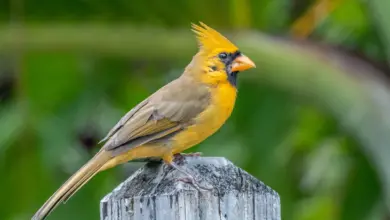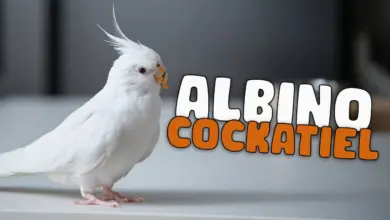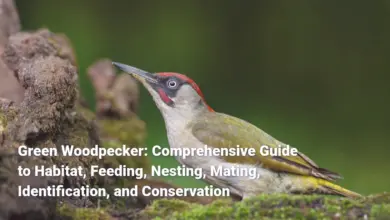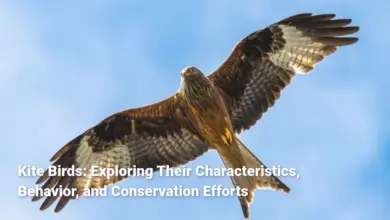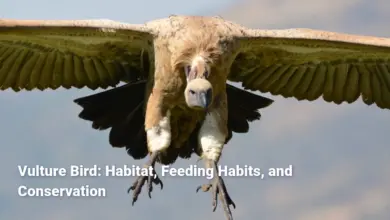Redwing Bird: Detailed Insight into Its Characteristics, Habitat, Behavior, and Conservation Efforts
An In-Depth Look at the Redwing Bird's Features, Habitat, Behavior, Conservation Challenges, and Cultural Significance
Redwing Bird: An In-Depth Exploration
The redwing (Turdus iliacus) is a captivating bird that enchants birdwatchers and nature enthusiasts alike, often referred to as the harbinger of seasonal change due to its migratory patterns. Known for its striking plumage and melodious calls, the redwing is a key player in the avian community across Europe and parts of Asia. This small thrush is distinguished not only by its delicate size but also by the unique characteristics that allow it to thrive in various environments.
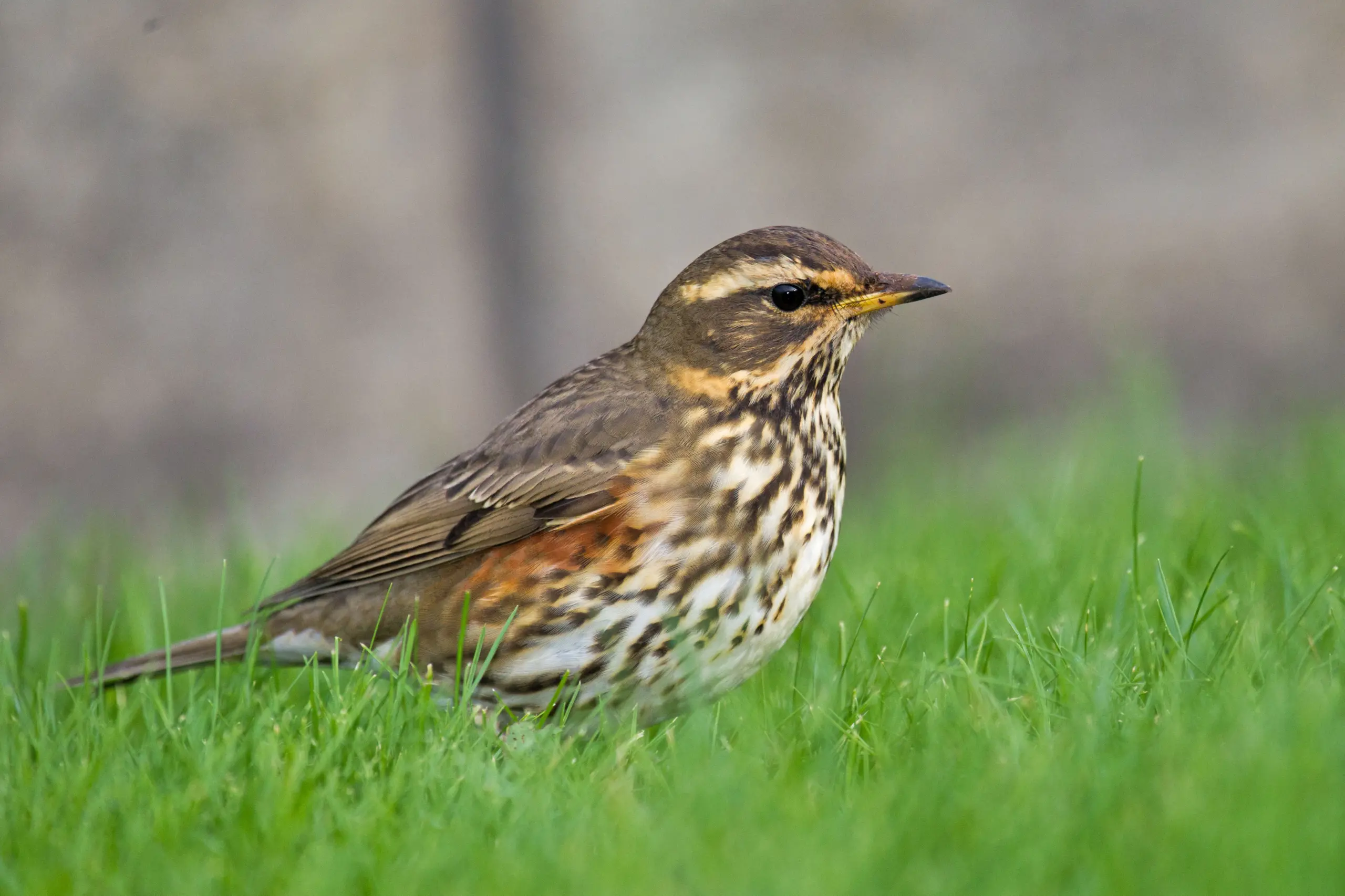
In this exploration, we’ll dive deeply into the physical characteristics, habitats, behaviors, conservation status, and cultural significance of the redwing, as well as its comparisons with other bird species. By analyzing these aspects, we hope to shed light on the ecological role of the redwing, its challenges for survival, and what can be done to preserve this beautiful species.
Physical Characteristics of the Redwing Bird
The redwing is a compact songbird with several notable physical traits that make it easily recognizable in the wild. Measuring approximately 20 to 24 centimeters in length, the redwing boasts a wingspan of 33 to 34.5 centimeters. Weighing between 50 to 75 grams, it fits snugly into the thrush family, where it exhibits physical traits that blend functionality with beauty. Its plain brown back serves as a canvas, complementing the creamy-white undersides adorned with dark brown spots an artistic display tailored by nature for camouflage against predators.
One fascinating aspect of the redwing’s profile is its eye-catching red flanks and underwings, which serve not only as a vibrant highlight in its otherwise muted color palette but also play a crucial role in identification. Imagine spotting these birds in meadows or woodlands, their vibrant coloring contrasting beautifully with the browns and greens of their surroundings.
A useful comparison can be made between the redwing and its close relatives, such as the song thrush and the fieldfare. While the song thrush has a more dolled-up presence with more extensive spotting on the underparts, the redwing’s streamlined design allows it to adapt as a proficient forager. Moreover, the creamy-white stripe above the eye acts like a beautiful brushstroke, further distinguishing the redwing from other similar species, enhancing its identification in the field.

Redwing Physical Characteristics Summary:
- Length: 20–24 cm
- Wingspan: 33–34.5 cm
- Weight: 50–75 grams
- Distinctive Features: Red flanks, underwings, creamy-white stripes, and spots on creamy-white underparts.
These physical characteristics not only contribute to the redwing’s aesthetic appeal but also underscore its adaptability as it forages for food and navigates its habitat with ease.
Size and Wing Span
In the realm of avian wonders, size can often be a reflection of a bird’s ecological role, and for the redwing, this holds true. The redwing measures between 20 to 24 centimeters in length, placing it firmly in the category of small to medium-sized birds. Its wingspan varies from 33 to 34.5 centimeters, enabling impressive maneuverability and agility during flight.
Visualizing Size in Context:
- Comparative Size: Think of a redwing as being approximately the length of a standard pencil or a small apple. It is small enough to flit through branches with relative ease yet substantial enough to navigate through open fields and forests.
- Wingspan Comparison: With a wingspan akin to that of a common sparrow, the redwing efficiently capitalizes on its aerodynamic design, enabling it to soar and glide gracefully.
The small size of the redwing allows it to fit into niches that larger birds cannot access. Its physical stature aids in foraging, allowing it to search for invertebrates in leaf litter or ground cover where other, larger species might not venture. Moreover, this size allows for more efficient cold-weather survival.
On the flip side, this diminutive stature makes it vulnerable to larger predators such as hawks and owls. Thus, the redwing’s physical design serves dual purposes: effective foraging during the breeding seasons and graceful evasion from threats throughout its lifecycle.
Plumage Colors and Patterns
When it comes to the visual identity of the redwing, its plumage tells a colorful story that is both practical and beautiful. The upperparts of this thrush are typically a rich brown, interspersed with darker streaks that help it blend seamlessly into its woodland surroundings. This cryptic coloration acts as a natural cloak, making it hard for predators to spot them as they forage through underbrush.
As one delves deeper into the individual components of the redwing’s appearance, it becomes evident that the underparts reveal a palette of creamy-white adorned with dark brown spots. This striking combination of colors can be likened to a painter’s canvas, where each stroke is meticulously crafted to blend the bird into its environment while providing some visual flair.
Distinctive Markings
- Underparts: The pale creamy underparts serve a purpose beyond aesthetics; they help provide a sense of camouflage in dappled sunlight, challenging any potential threat.
- Wings: The most captivating feature remains the reddish-orange panels under the wings, visible when in flight. This vibrant flash of color serves as both a warning signal to rivals and a posturing display in courtship rituals, transforming the bird into a living mosaic against its surroundings.
The head typically exhibits a darker hue, with a pronounced eye stripe that is lighter in color, enhancing its facial features. This head structure helps define the redwing’s identity a fitting crown for a bird that is so often heard but sometimes hard to see amidst the foliage.
In sum, the plumage of the redwing is not only aesthetically pleasing but also serves critical survival functions, allowing these birds to camouflage themselves, signal to potential mates, and navigate their habitats effectively.
Unique Features
The redwing stands out in the avian world not just for its physical characteristics but also for an array of unique attributes that define its behavior and habitat. Measuring about 20 to 22 centimeters in length, it is classified among the medium-sized thrushes.
Behavioral Characteristics:
- Distinctive Call: One of the unique features is its unmistakable call a “tsee-tsee-tsee” sound that resonates through breeding grounds. This vocalization aids in mate attraction and territory establishment. Imagine standing in a misty forest, where the hauntingly beautiful calls float through the air, revealing the presence of these shy ground-dwellers.
- Ground Foraging: Unlike some of its relatives that may favor loftier foraging techniques, the redwing is terrestrial, often foraging directly on the ground among grasses and underbrush. It uses its keen vision to spot food items hidden beneath leaf litter.
The adaptability of the redwing to diverse environmental conditions is remarkable. They are inherently migratory, breeding in harsh northern climates and wintering in milder regions. This migratory strategy is crucial for their lifecycle, allowing them to exploit seasonal food availability effectively.
Habitat Manipulation: The species shows preference for mixed woodlands, heathlands, and farmland habitats, often seeking thickets or shrubs for nesting and roosting. This ecological versatility enables them to thrive in varied conditions, which is essential as habitat loss becomes increasingly prevalent across their range.
The combination of striking physical features and behavioral attributes not only facilitates the survival of the species but also engages the interest of any onlooker rendering the redwing a fascinating avian subject for study.
Habitat and Distribution of the Redwing Bird
The redwing is a nomadic presence across its breeding and wintering ranges, inhabiting a variety of ecosystems that underscore its adaptability. Nestled primarily in coniferous and birch forests, the redwing favors habitats with dense shrubs or undergrowth for nesting, often constructing its nests at ground level or in low shrubs.
Preferred Ecosystems
- Breeding Habitat: During the breeding season, redwings are commonly found in wooded areas, particularly where birch trees dominate.
- Winter Habitat: As winter approaches, they migrate to open woodlands, farmland, orchards, and parklands ecosystems that provide ample feeding opportunities.
This transition from breeding to wintering habitats highlights a significant aspect of the redwing’s ecology: its ability to adapt to seasonal changes. By foraging in gardens and fields where food sources such as berries and insects abound, the redwing exemplifies nature’s efficiency, squeezing the most from its environment at different times of the year.
Regions and Countries with Notable Populations
The geographical distribution of the redwing is broad and varied. Breeding predominantly occurs in the northern regions of Europe and the Palearctic, which includes:
- Scandinavia: Norway, Sweden, Finland.
- Baltic States: Estonia, Latvia, Lithuania.
- Northern Poland: Where they nest densely in wooded areas.
- Western Russia: Extending into the far eastern regions, including Chukotka Autonomous Okrug.
During winter, they migrate to less harsh locales, including:
- Western/Central Europe: The UK, Ireland, France, and Germany.
- Northern Africa: Especially Morocco and Algeria.
- Southwestern Asia: Up to northern Iran.
The redwing may also be seen as a rare vagrant in eastern North America, with occasional sightings that pique the interest of ornithologists and birdwatchers alike.
As such, the redwing demonstrates versatility in inhabiting various ecosystems, highlighting its ecological importance and attractive presence across distinct regions of the globe.
Seasonal Migrations
The redwing’s migratory behavior is a fascinating aspect of its life cycle, characterized by seasonal shifts that emphasize its adaptability to environmental changes. Typically, these birds commence their migration to wintering grounds around late autumn, between September and November, departing from their breeding territories in spring (March to May).
- Migration Patterns: Redwings migrate in loose flocks, often containing anywhere from 10 to over 200 individuals. This communal movement is important for both navigation and safety, as traveling in a group can help deter potential predators.
- Nocturnal Journey: One unique trait of redwing migration is its nocturnal behavior. They are known to migrate at night, which allows them to avoid daytime predators while benefiting from cooler temperatures. Their characteristic high-pitched contact calls audible even in the dead of night serve not only to maintain flock cohesion but also to guide the way for those travelling in the darkness.
- Return to Breeding Grounds: Upon returning to their breeding territories in Scandinavia and northeastern Europe, redwings utilize their sharp senses and keen instincts to navigate. This migration is a vital part of their life cycle, allowing them to exploit seasonal food availability for reproduction.
In summary, the redwing’s migratory patterns showcase both resilience and adaptation, essential traits that enable these birds to thrive in changing environments across vast distances.
Behavior and Social Structure of the Redwing Bird
The redwing exhibits intriguing behavioral traits and a social structure that enhance its survival, particularly outside of the breeding season. Redwings are notably social and often forage in loose groups that can range in size from modest gatherings to flocks containing over 200 individuals. This social behavior is integral to their feeding and lifestyle, allowing them to navigate their habitats efficiently.
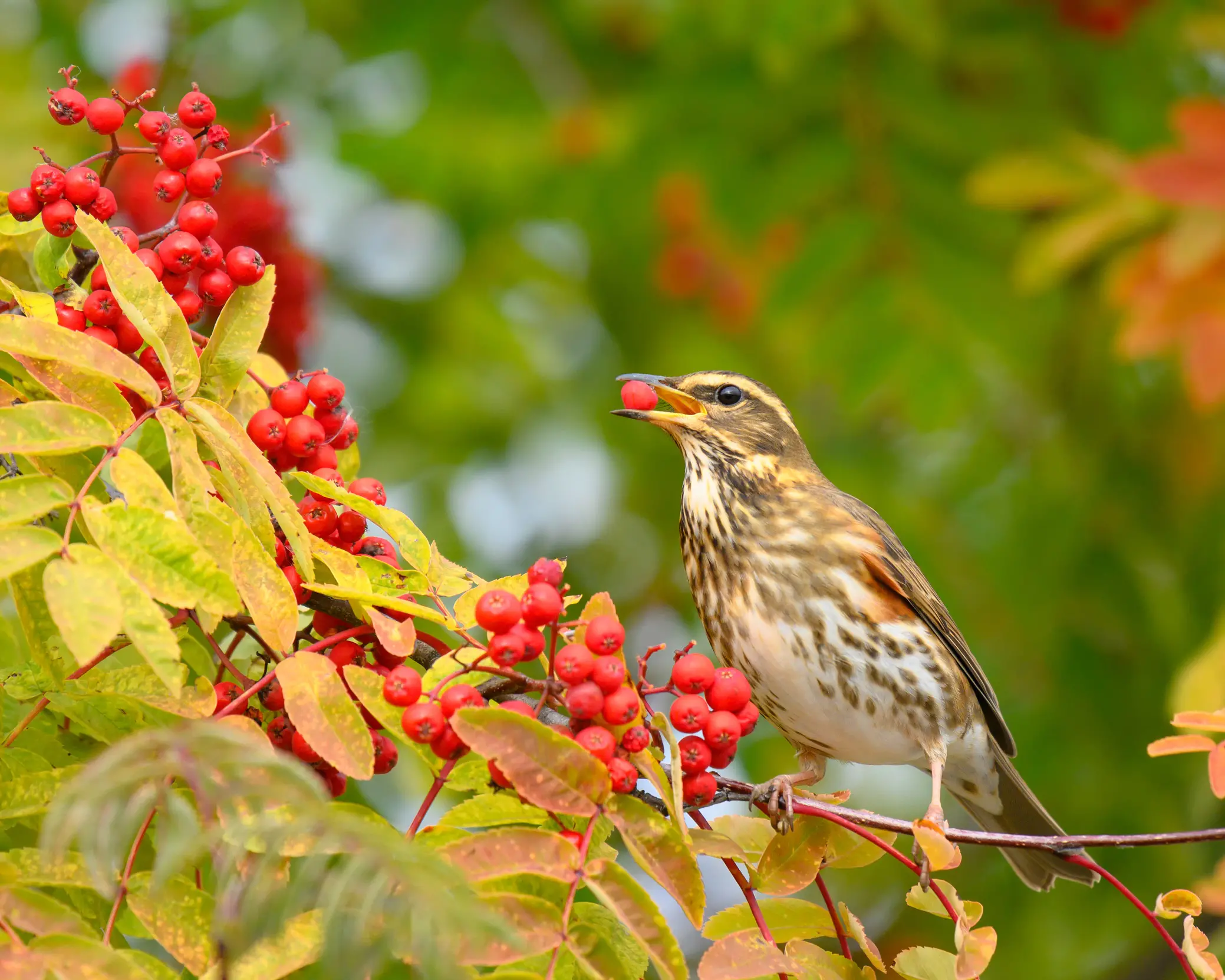
Feeding Habits and Diet
When it comes to feeding, redwings are omnivorous in their diet, primarily consuming a mix of insects, worms, and other invertebrates throughout the warmer months. A distinct behavioral trait of redwings is their foraging habits. They are often seen sifting through leaf litter and grass with remarkable dexterity, searching diligently for food.
- Diet Breakdown:
- Summer Foods: Invertebrates such as crickets, earthworms, and slugs dominate their diet during the breeding season, providing the necessary protein for successful reproduction.
- Winter Foods: As temperatures drop, redwings shift their focus to berries, particularly those from rowan and hawthorn plants. This seasonal adjustment is a stark reminder of the redwing’s adaptability.
Their ability to forage collectively enhances their chances of finding sufficient food. A communal effort during feeding not only increases foraging success but also provides safety in numbers mitigating the risks of predation and increasing opportunities for social interaction.
Nesting and Breeding Practices
Redwings build nests that reflect their versatile nature and resourcefulness. Typically found in shrubs or on the ground, their nests are constructed using grasses and twigs, creating a secure environment for their young. On average, females lay between four to six pale blue-green eggs, which are spotted with red-brown, adding a touch of artistry to their nesting.
- Incubation: The incubation period lasts around 12 to 13 days, a critical time when the female must keep the eggs warm and hidden from potential predators. After hatching, the chicks require dedicated care for approximately two weeks before they are ready to leave the nest, relying on their parents for food to grow and develop.
Vocalizations and Communication
Vocalizations play a crucial role in the social interactions of redwings. Their most recognizable call a high-pitched “tsee-tsee” sound is often heard when they are in flight, serving as a contact call that allows flock members to maintain connection amidst their journeys. During the breeding season, males produce a beautiful, warbling song, though this is less commonly heard outside of this critical period.
Ultimately, the redwing’s social structure, feeding habits, nesting behaviors, and vocal communications depict a well-adapted bird capable of thriving in various environmental conditions. These behaviors not only stimulate conservation interest but also foster community appreciation for these charming readers of the sky.
Conservation Status of the Redwing Bird
The conservation status of the redwing (Turdus iliacus) raises concerns as it is categorized as Near Threatened on the IUCN Red List. This designation reflects ongoing population declines largely attributed to various environmental pressures. With an estimated population of around 98 million to 151 million individuals globally, fluctuations in breeding populations pose significant challenges to their long-term survival.
Threats to Its Population
Several key factors adversely affect redwing populations, prompting their conservation status:
- Climate Change: This pervasive issue alters habitats and food availability, impacting breeding and wintering grounds. Notably, the latitudinal mean center of weighted density has shifted northward in countries like Finland from the 1970s to the 2010s due to climate variations.
- Habitat Loss: Over-grazing and the consequent loss of thicket-scrub vegetation have severely weakened their natural habitats. These losses reduce the availability of suitable nesting sites, directly affecting reproduction.
- Illegal Trapping: Certain regions, particularly around the Mediterranean, have been reported to practice illegal trapping, exacerbating their population challenges.
Conservation Efforts and Initiatives
Recognizing the threats to redwing survival has led to concerted conservation efforts aimed at reversing the trends impacting their habitats. Key initiatives include:
- Habitat Restoration: Focusing on re-establishing suitable environments that include hedgerows, scrublands, and woodlands essential for breeding and foraging.
- Monitoring Programs: Engaging in population trend monitoring through organized bird surveys helps researchers assess the effectiveness of conservation measures over time.
- Community Engagement: Raising awareness on local wildlife conservation, helping communities understand the ecological impact that redwings and other songbirds have in sustaining biodiversity.
How to Help Protect the Redwing Bird
Concerned citizens can contribute to the conservation of the redwing by taking actionable steps:
- Create Wildlife-Friendly Spaces: Plant berry-bearing trees and shrubs in gardens, providing food sources that will carry the redwing through winter.
- Reduce Pesticide Use: Employ organic gardening techniques to support the invertebrate population, which provides necessary food during the breeding season.
- Provide Fresh Water: Set up bird baths or shallow ponds, ensuring easy access to hydration during hot summer months.
- Support Local Conservation Programs: Engage with or donate to organizations that focus on bird conservation efforts to amplify successful initiatives.
- Advocate for Policy Change: Encourage local policies that protect natural habitats and promote biodiversity in community planning.
By collaborating with conservationists and advocating for eco-friendly practices, there is ample opportunity to ensure the redwing’s survival for generations to come.
Fun Facts About the Redwing Bird
The redwing (Turdus iliacus) is not just a pretty face in the bird world; it’s also filled with surprising features that glitter with intrigue while holding a special place culturally and ecologically.
- Physical Description: In its elegant simplicity, the redwing measures about 20-24 centimeters in length, resembling a small thrush but with expressive plumage marked by vibrant reddish flanks against a backdrop of muted browns and creams.
- Migration Patterns: These birds engage in migratory behaviors, breeding in northern Europe and wintering primarily in western and central regions. Some even venture as far as southwestern Asia and northern Africa as seasons change.
- Dietary Habits: As omnivores, redwings feast on invertebrates during warmer months but switch to a berry-filled diet in winter,-symbolizing a remarkable adaptability to their changing environment.
- Social Behavior: They demonstrate a highly social nature, often seen foraging in large, loose flocks that may exceed 200 individuals this communal approach not only increases foraging success but also enhances predator evasion.
- Breeding: Nesting practices reflect their woodland habitats, building nests in shrubs or on the ground, lined with grasses and twigs. Typically laying four to six eggs, redwing care is tightly woven with social structures in the population during breeding seasons!
Cultural Significance
The redwing’s cultural legacy is woven into folklore and tradition across various regions. In Turkish culture, the redwing is often associated with beauty and spring renewal. Its melodious song and striking appearance symbolize the arrival of warm weather, fostering a cultural appreciation rooted in the transitions of the seasons.
As a consistent presence in literature and art, the redwing has become emblematic of nature’s beauty and fragility, serving as a reminder of the delicate balance that sustains all life.
Comparisons with Other Bird Species
When comparing the redwing with other avian species within the thrush family, several unique traits and behaviors stand out. One can draw a parallel between the redwing and other thrushes, such as the song thrush and fieldfare, concerning habitat preference, migration patterns, and foraging behaviors.
- Similarities with Other Thrushes: Like the redwing, fieldfares are also thrushes characterized by a social foraging style, often spotted traveling together in flocks. While the redwing is smaller, the fieldfare presents a more robust profile.
- Feeding Behavior: Both redwings and song thrushes exhibit at least some degree of dietary flexibility, adjusting their feeding habits based on seasonal food availability. Interestingly, the redwing can detect fruits using ultraviolet color perception a visual advantage not universally shared among avian species.
Notable sightings of redwings during migration contribute to birdwatching circles and further understanding the ecological impact of thrushes and their movements across vast landscapes. In essence, the physical characteristics and behaviors of the redwing not only reflect its adaptation to ecological niches but also highlight the interconnectedness of avian species within their habitats.

Notable Sightings
Notable sightings of the redwing over time have sparked excitement and curiosity among birdwatchers. For instance, while these birds are common winter visitors in the UK, reports of significant migrations from northern Europe paint a vivid picture of their journey.
The unpredictable nature of their migrations makes sightings within their non-breeding distributions genuinely remarkable; on one occasion, observers may spot large flocks feeding in gardens one day, while the next could reveal individual redwings perched high on treetops, blending seamlessly into their environment.
Understanding the presence of redwings aids in appreciating the broader ecological context of the environments they inhabit and helps draw attention to the need for conservation efforts to protect their habitats and populations.
In conclusion, the redwing bird is not only a marvel of nature but also a testament to the intricate balance of ecosystems. As we continue to engage with and support conservation efforts tailored toward this species, we will foster a greater comprehension of the role that redwings and other avian species play in our world. Through responsible stewardship, we can ensure that the song of the redwing continues to resonate through the forests and fields for generations to come.





